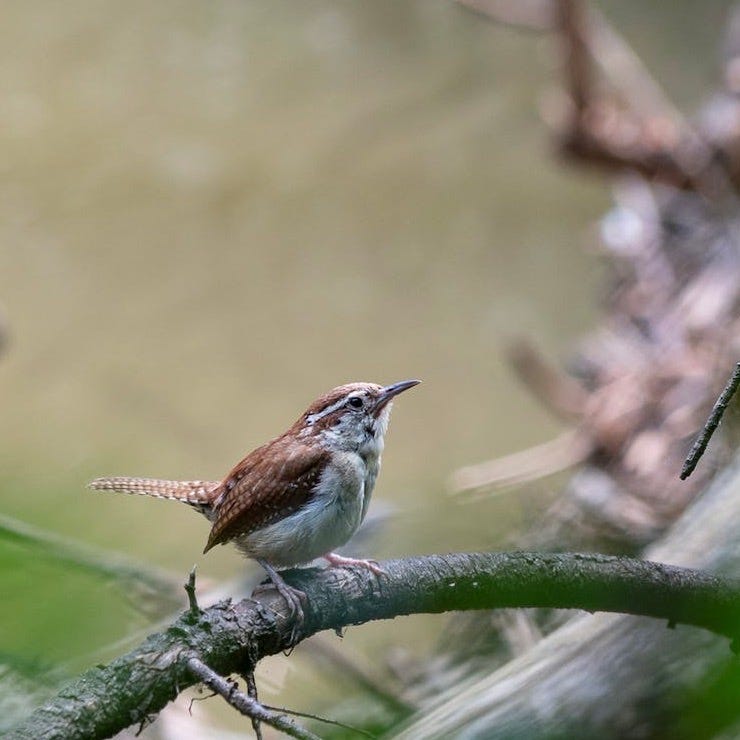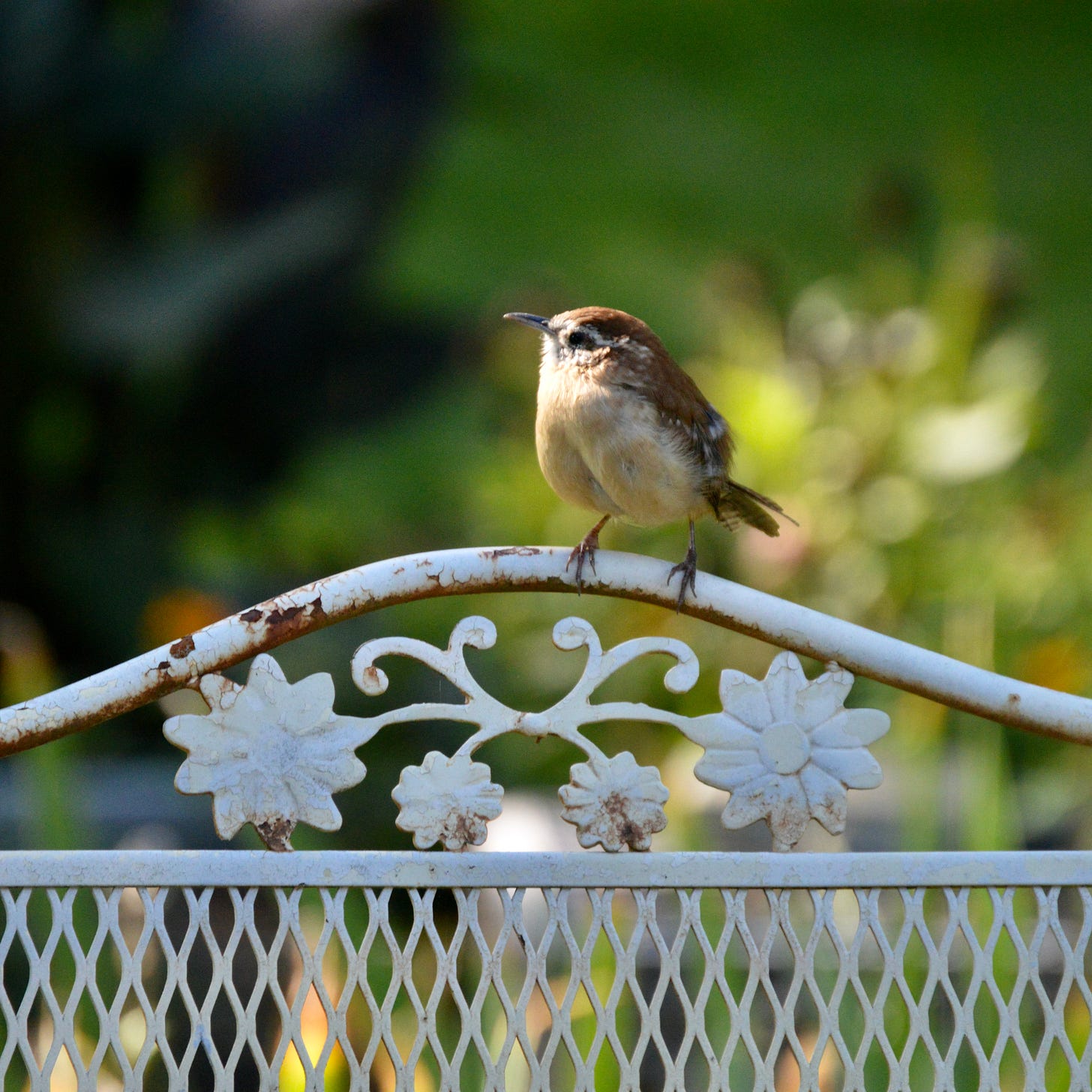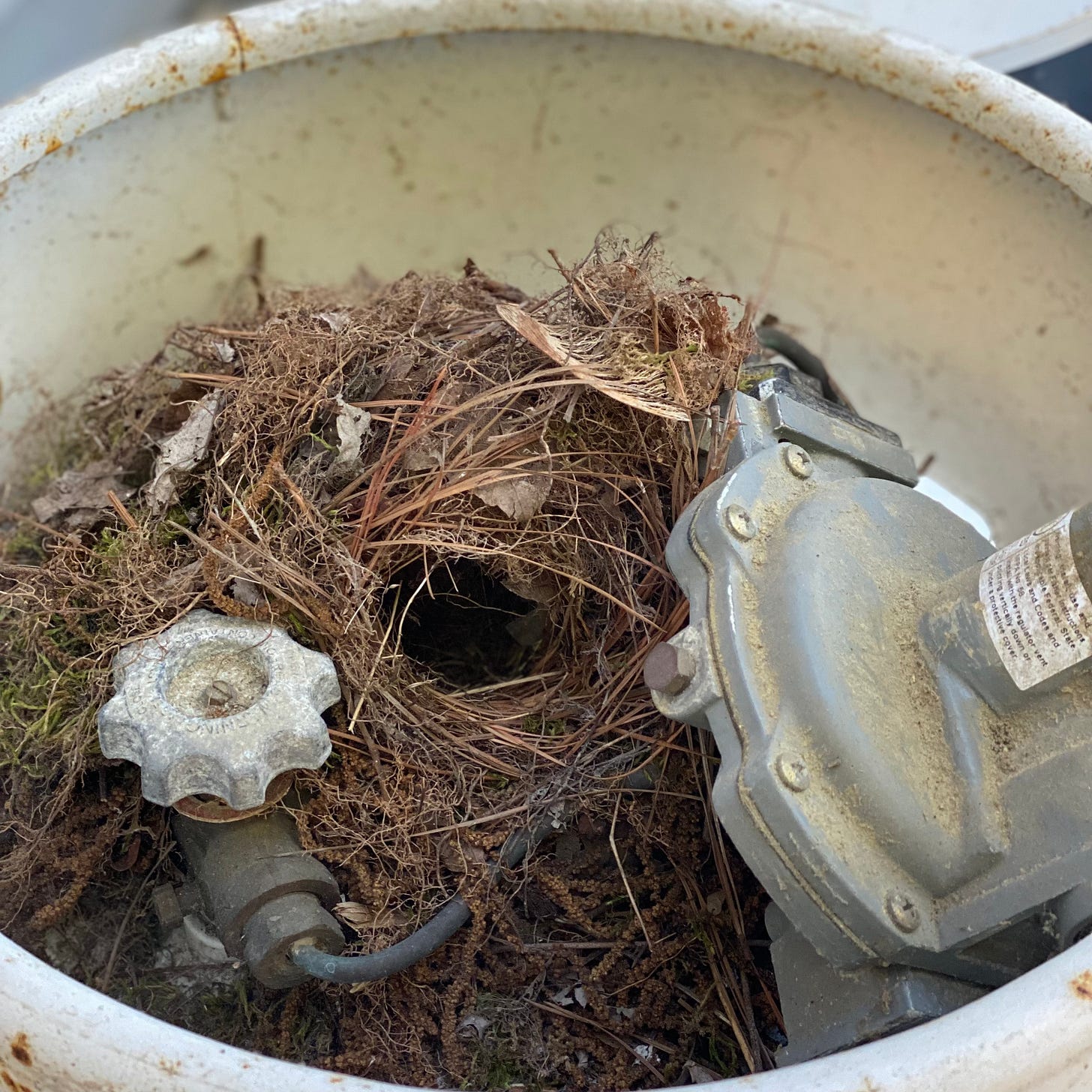If there is a silver lining to the recent, tragic loss of our three cats, it is that the songbirds are now free to congregate in our yard without risk of being stalked. We regularly counseled our felines to stick to members of the rodent family (“No bunnies, no birds!”), an imperfect attempt at curbing their unsavory habits. Cats are poor listeners.
To see the range of avian species now appreciating the space is pure delight. Given our four-season climate and migratory flight paths, the variety of beaked faces here is always in flux. By now, the hummingbirds and swallows are gone, as are the vireos, orioles and buntings. In their place, dark-eyed juncos and white-throated sparrows mingle with birds that stay with us year-round: chickadees and cardinals, mockingbirds and starlings, woodpeckers, bluebirds and blue jays.
A few days ago, an imperious jay crashed into the sliding glass door that is an arm’s length from my preferred work space at the kitchen counter. The bird flew off unharmed, thank goodness, even though the sound of the impact nearly pitched me out of my chair. Crazy ol’ bird.
Each feathered friend has endearing qualities, and I’m not one to play favorites. But I must admit, a pair of Carolina Wrens who call this place home has made a very special impression.
Though often described as shy, because they’re not the type to luxuriate on the lawn, they’re also the bold, burnished little companions who will build their nests in hanging baskets by your door. That’s not timidity, that’s moxie!

Here, it makes sense to back up a bit. Class, let us turn attention to our trusty, dusty copy of Wikipedia, where we find that taxonomically speaking, these wren friends started out as Sylvia ludoviciana, so named in 1790 by John Latham, a British ornithologist. (Side note: King George III was sitting on the throne of Great Britain at that time, which will matter in a minute.) Sylvia comes from silva, which means spirit of the wood.
A quarter of a century later, a French bird-guy shifted these wrens from the genus Sylvia to a new subgenus he’d just created: Thryothorus. That term came from combining two Greek words— thrýon, meaning rush or reed, and thoũros meaning impetuous, rushing or jumping.
I don’t feel this way about a lot of taxonomic names, but in this case, by George, they got it! If it had been me, I’d have gone with Rush rusher, but I wasn’t around to ask.
The second half of the bird’s scientific label essentially means “of Louisiana,” which is where it was formally identified. Until the 1800s, it was predominant only in the North American southeast, but warming temperatures have coaxed it as far north as the southern edges of Ontario. A non-migratory species, once it moves, it does not return. But it is not equipped for the occasional harsh winters it sometimes experiences in its new range, leading ornithologists to speculate that it may never be permanently abundant outside of its places of origin.

Unlike most other birds, Carolina Wrens defend a permanent territory year-round. The male may start more than 10 nests before the pair selects one to complete together, a tactic believed to help confuse potential predators.
I think he’s just smart enough to give his girl the options she deserves. After all, they’re in this for the long haul. These wrens establish monogamous pair bonds, and genetic testing indicates they are almost never unfaithful.
Except for her slightly smaller size, the female is identical to the male. She alone incubates her typical clutch of four eggs, staying on the nest even when an intruder is near (more chutzpah!), while her mate bursts around the area, sounding alarm calls and making a big display. Six ounces of pure nerve, he dares any predator to get too close.
Though they both chatter, chirr-up, and scold, it is only the male who makes music. His three-syllable song has been translated into English many times over, most frequently as teakettle-teakettle-teakettle. But there are other renderings, each more amusingly human than the next.
Come to me-come to me-come to me
Tweedle-tweedle-tweedle
Jimmy-Jimmy-Jimmy
Germany-Germany-Germany
Cheeseburger-Cheeseburger-Cheeseburger
For a pocket-size bird, the male Carolina Wren has a gigantic voice which he might exercise up to 3,000 times a day. Ours likes to sing from the top edge of our wrought iron settee. He tips his tail down, throws his head back, and belts out his tune. The way he bobs up and down reminds me of Chuck Berry.
What I love best of all, though? This bird has a way of turning up at the most opportune times: When I’ve been consumed by my computer and need a reminder to look up. When I’m missing someone dear to me. When the clouds have arranged themselves into the shape of a heart. There he is!
With his mate nearby, I’ve come to expect his daily appearances. Yesterday, I waited in anticipation as I went about my work. It was gusty and grey out, with our first freezing temperatures of the season blowing in on a gale. My copper-colored friends stayed away. I missed them.
From time to time, they’ve been seen slipping under the lid of our propane tank, where they nested together this summer. I imagined them tucked inside together, or perhaps in one of their alternate nests, keeping each other warm. I will look for them again tomorrow. I will listen for his song. It will make me smile.
~Elizabeth






loved this story, and thank you for the inspiration to record my voice! Such a lovely touch.
I agree with Prue Batton that the smaller the birds, the cheekier they are. So much fun to see my favorite sub stack writers all commenting!!!
My pair of wrens chose to build atop a motion sensor light this year . Must have been like living under a disco ball! They would scold us entering or exiting the back door or if we had a fire in the fire pit on cool evenings. The neighborhood captors don't seem to bother them the same way they go after the jays and cardinals. .
Such fun!